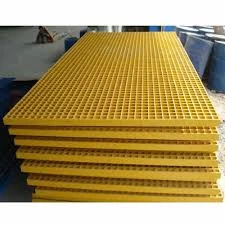loading...
- No. 9, Xingyuan South Street, Dongwaihuan Road, Zaoqiang County, Hengshui, Hebei, China
- admin@zjcomposites.com
- +86 15097380338
- Welcome to visit our website!
Innovative Applications of FRP Pultruded Sections in Modern Construction and Engineering
Understanding FRP Pultruded Sections An Innovative Approach to Composite Materials
In recent years, the construction and manufacturing industries have witnessed significant advancements in materials technology. One such innovative development is the use of Fiber Reinforced Polymer (FRP) pultruded sections. These specialized composite materials have gained popularity due to their unique combination of strength, durability, lightweight nature, and corrosion resistance. This article explores the characteristics, benefits, applications, and future prospects of FRP pultruded sections.
What are FRP Pultruded Sections?
FRP pultruded sections are composite materials produced through a process known as pultrusion. This process involves the continuous pulling of fiber reinforcement, such as glass, carbon, or aramid fibers, through a resin-impregnated die. The fibers are aligned in a specific orientation to maximize strength and stiffness properties, while the resin acts as a binding agent that gives shape to the material. Once the composite material exits the die, it is typically cured in an oven, resulting in a rigid and lightweight structural component.
Key Characteristics
1. Strength-to-Weight Ratio FRP pultruded sections exhibit exceptional strength-to-weight ratios, making them ideal for applications where weight reduction is a priority, such as in aerospace and construction.
2. Corrosion Resistance Unlike traditional materials such as steel or aluminum, FRP is inherently resistant to corrosion, making it suitable for environments exposed to chemicals, saltwater, or high humidity.
3. Thermal Insulation FRP materials have poor thermal conductivity, which makes them ideal for insulation applications, helping to improve energy efficiency in buildings.
4. Low Maintenance The durability of FRP pultruded sections means they require minimal maintenance over their lifespan, reducing long-term costs for end-users.
Benefits of Using FRP Pultruded Sections
1. Versatility FRP pultruded sections can be manufactured in various shapes and sizes, accommodating diverse design requirements. They can be customized to fit specific applications, whether for bridge construction, marine components, or industrial structures.
2. Sustainability The use of FRP materials helps in reducing the overall carbon footprint of construction projects. Their longevity and reduced need for maintenance contribute to sustainable building practices.
frp pultruded sections

4. Non-conductive Properties FRP is non-conductive, making it suitable for electrical applications and environments where electrical hazards are a concern.
Applications of FRP Pultruded Sections
FRP pultruded sections have found applications across various industries
- Construction Used in bridge components, decking systems, and reinforcing structures, FRP provides long-lasting alternatives to steel and concrete.
- Marine In boat building and other marine applications, FRP’s resistance to moisture and corrosion is highly advantageous.
- Telecommunications Poles and supports made of FRP are utilized in telecommunications for their strength and resistance to environmental degradation.
- Aerospace Lightweight and strong FRP pultruded sections help reduce the weight and increase the efficiency of aircraft designs.
Future Prospects
As the demand for durable and lightweight materials continues to grow, the market for FRP pultruded sections is expected to expand. Innovations in manufacturing processes and the development of new resin formulations may enhance the mechanical properties of these materials, broadening their application potential. Additionally, increased environmental awareness may lead to a rise in the use of recycling practices for FRP composites, further establishing their position in sustainable construction and engineering.
Conclusion
FRP pultruded sections represent a significant advancement in composite materials, offering numerous benefits across a wide range of applications. Their unique properties, including strength, durability, and resistance to corrosive elements, make them an excellent choice for modern engineering challenges. As technology continues to evolve, the role of FRP in various industries is set to grow, paving the way for innovative solutions that meet the demands of today and tomorrow.
-
GRP Structures: The Future of Lightweight, High-Performance EngineeringNewsJun.20,2025
-
FRP Water Tank: High-Performance Storage for Corrosive and Clean Water SystemsNewsJun.20,2025
-
FRP Square Tube: The New Industry Standard for Chemical and Structural ApplicationsNewsJun.20,2025
-
FRP Pultruded Profiles: The Ultimate Choice for Lightweight Structural StrengthNewsJun.20,2025
-
FRP Handrails: The Safer, Smarter, and Stronger Choice for Modern InfrastructureNewsJun.20,2025
-
FRP Grating: The Smart Solution for Durable, Lightweight Industrial FlooringNewsJun.20,2025
-
Why Choose a Galvanized Water Tank for Your Storage NeedsNewsMay.21,2025
